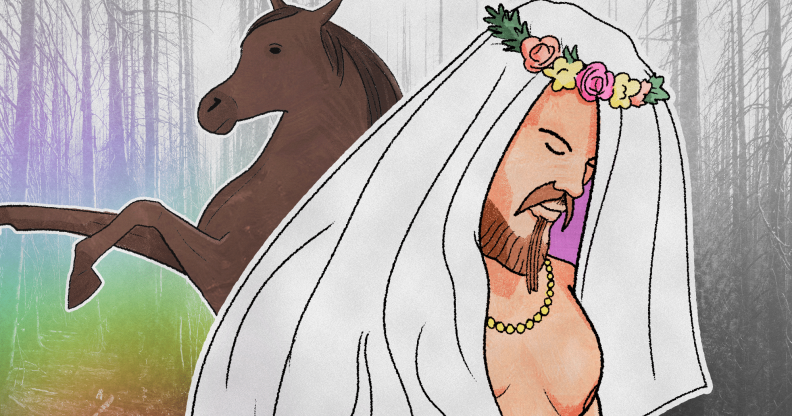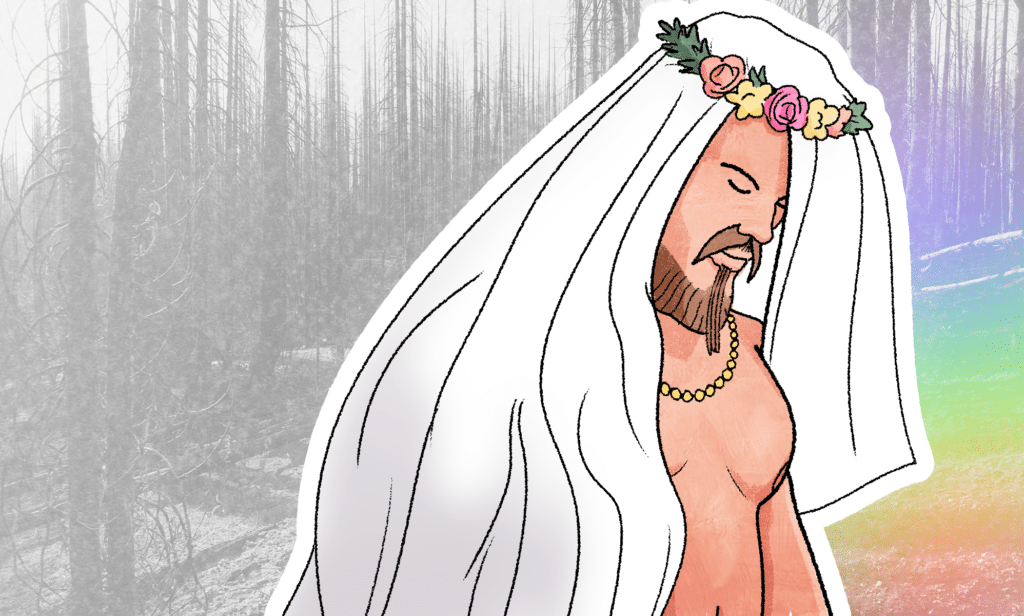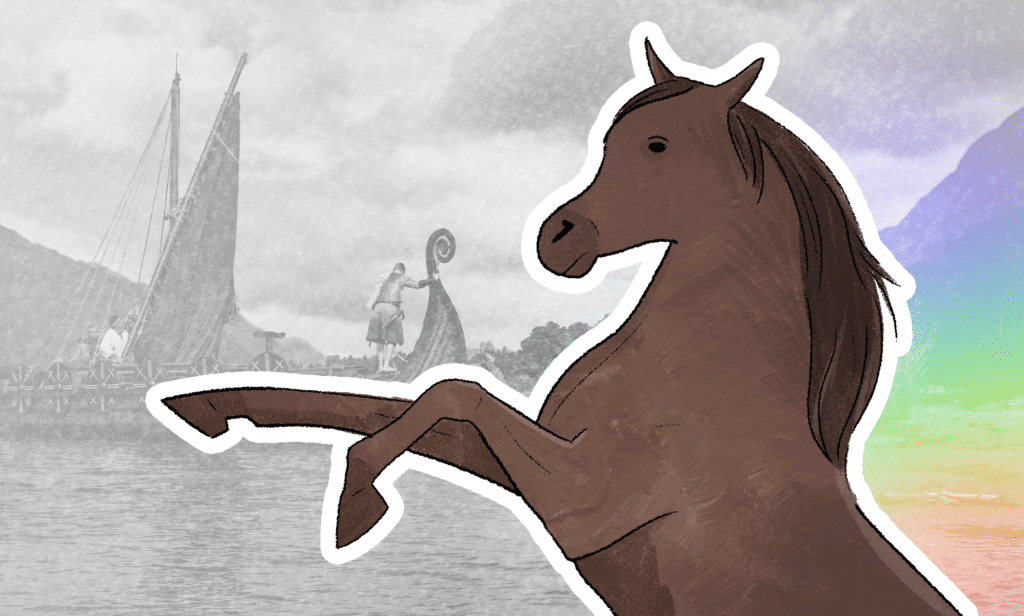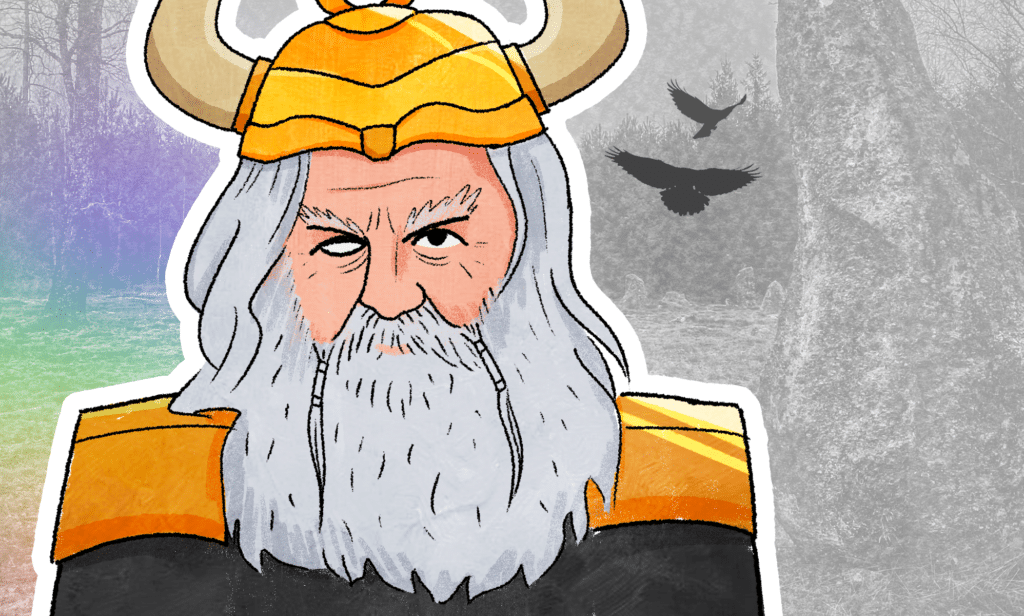5 incredibly queer Viking stories you probably haven’t heard before

(PinkNews)
The Vikings: for most of us, they’re the peak of cis-het masculinity. But increasingly, research is showing that this simply wasn’t the case.
I’m a Viking historian. I study queerness and gender in the Viking Age, and how those ideas have been weaponised by white supremacy in the last 200 years.
The Vikings were the people who lived in Scandinavia around 700-1100 AD. They’re most famous for raiding, trading, and exploring throughout Europe and beyond: as far east as Russia, as south as Turkey, as north as Iceland and as west as Newfoundland, Canada.
By the end of the Viking Age, the Vikings were converting to Christianity, but for the majority of the Viking Age, they believed in the Norse pantheon of gods, with Odin, Thor, and Loki as some of the most famous gods.
I research the myths and rituals around these gods. I’ve questioned how Odin has been presented in myths; I’ve explored Viking magic and the impact it had on gender; and I often give a lecture called “Why We Should Care About Queer Vikings” which traces how white supremacists have portrayed Vikings in ways that serve their political purposes.
Learning about our past doesn’t end when LGBTQ+ History Month does, so here are five queer Viking stories that you probably haven’t heard before.
Thor the Bride

Thor. (PinkNews)
We think of Thor as the most masculine god, and his hammer, Mjolnir, is the symbol of his masculinity and source of strength.
But in “Thrym’s Poem”, Thor’s hammer is stolen by the giant Thrym, and Thor must travel to Giant Land to get it back. There’s one catch though: Thor has to dress up as the goddess Freyja and pretend to marry Thrym if he has any hope of getting his hammer back. Thor isn’t too happy with this, but reluctantly allows the other gods to dress him in a wedding dress, necklace, jewels, and a woman’s headdress.
Thor travels to Giant Land and marries Thrym, who starts to get suspicious about who he’s married, leading to some very ‘Little Red Riding Hood’ questioning: Why is Freyja eating so much? Why is Freyja drinking so much?’ Why are Freyja’s eyes so terrifying?
Thankfully, Thor pulled it off and won his hammer back, and he was pretty glad to get Freyja’s clothing off.
His handmaid, Loki, was probably a little bit more excited to keep his womanly clothing on though…
Mother Loki

(PinkNews)
Loki is best known for being the trickster god, but he also gave birth three times.
In the poem “Loki’s Quarrel’” Loki is arguing with the different gods when Odin shames Loki for spending eight winters beneath the earth as a woman milking cows and bearing children.
This isn’t the only time we hear this accusation. In the “Song of Hyndla”, Loki eats a woman’s heart which somehow (don’t ask me how!) impregnates him with her child.
But my favourite story is the tale of Loki and Svadilfari. A master builder is building a fortress for the gods, and Loki foolishly promises him Freyja, the sun, and the moon if he finishes it on time without any help from other humans.
The master builder is fine with this: his horse Svadilfari helps him! But the gods get worried when the master builder is on track to finish on time. They tell Loki that he has to find a way to stop that from happening… Loki’s answer?
Obviously, he has to turn into a female horse, run away into the night with Svadilfari, and come home pregnant.
His wild plan works: the master builder fails, the gods don’t have to give him Freyja, the sun, or the moon, and the best bit? Odin gets to keep the eight-legged horse that Loki gives birth to, called Sleipnir!
A trans man warrior?
It’s not just Viking myth that tells us about queerness, but also the physical remains of the Viking world.
In 1878, a grave was excavated from the Viking Age site of Birka in Sweden. The grave was a rich ‘chamber grave’: a wooden room in the ground full of weapons, horses, and the final resting place of what scholars believe to be a great warrior. For over 100 years, scholars believed this person could only be a man: he was probably a warrior, after all.
But in 2017, a study of ancient DNA showed that this person had XX chromosomes – or would have been assigned female at birth – and the news was shared: the first female Viking warrior had been confirmed.
But things aren’t so clear cut. We don’t know if women were warriors, and knowing someone’s sex doesn’t tell you anything about their gender. We do have stories of people raised as women choosing to take on a male social role in order to fight, which raises the question: could this have been someone we would consider a trans man? Scholars are very divided on this, but we definitely can’t rule it out.
Seid: the queer magic
In the Viking world, there was a type of religious magic called seid that we see come up often.
There’s not much we know about this type of magic, but we do know that women mostly practiced it, and men who practiced it were called queer. We’re not too sure why, but there’s a lot of theories: some people think it’s a form of shamanism borrowed from Saami culture, where the practitioner was not considered to be a man or a woman. Other people have argued that when practising this magic, the spirits involved penetrated you, and it was very shameful for men to be ‘penetrated’. Perhaps the strangest theory is that learning to practice this magic involved trial by autoerotic asphyxiation, which challenged ideas about sex.
We may not know exactly why, but Viking magic really challenged the cisheterosexual gender norms!
Odin the witch

Odin. (PinkNews)
Speaking of seid, we should probably talk about one of the most famous Viking gods, Odin.
Odin was accused of practicing this magic more than once, most famously by Loki in the poem “Loki’s Quarrel”. In this poem, the angry Loki insults Odin by saying that he struck on a drum like a sorceress and flew over mankind like a witch.
In the “Song of Harbard“, Odin, in disguise as Harbard, says he used love-tricks on witches and talks of using a magic wand on a giant: that’s a lot more magic than men are normally allowed to do!
Even more intriguing is a tiny statuette found in Denmark, less than 2cm tall, which shows a human in what appears to be a long dress, possibly with a moustache, seated on a throne with a raven on each armrest.
Scholars have debated a lot about who this could be, with most people split between it being Odin or a witch. But the evidence suggests that this could be Odin as a witch, reflecting the idea that Odin may not have been considered to be a man or a woman.
To learn more about queer Vikings, check out the podcast Vikings Are Gay!, or follow Eirnin on TikTok @VikingsAreGay.

